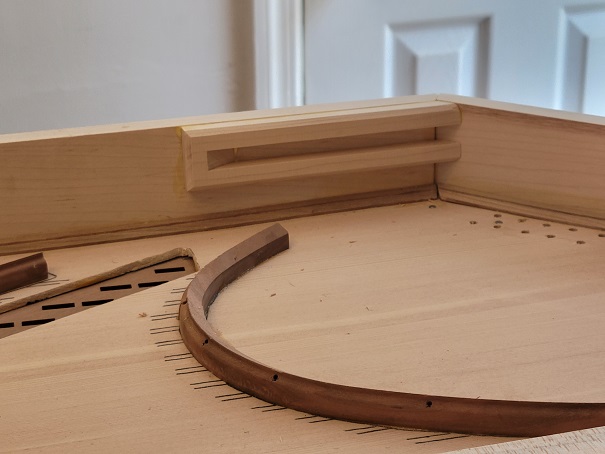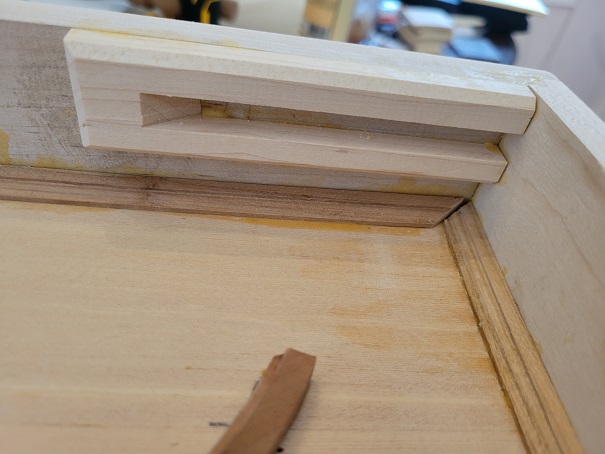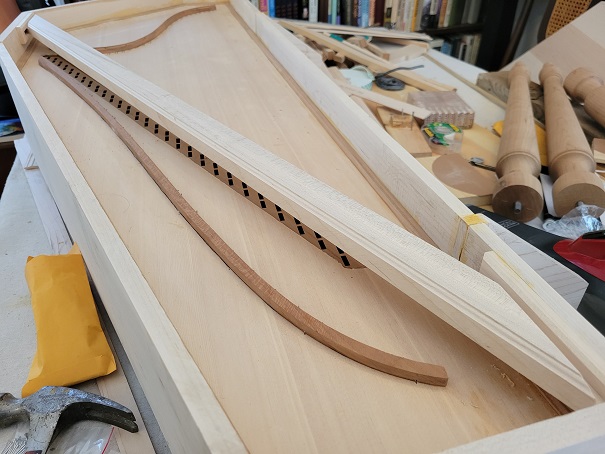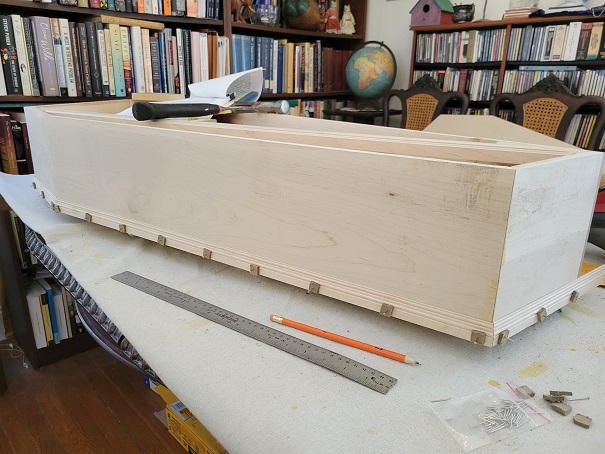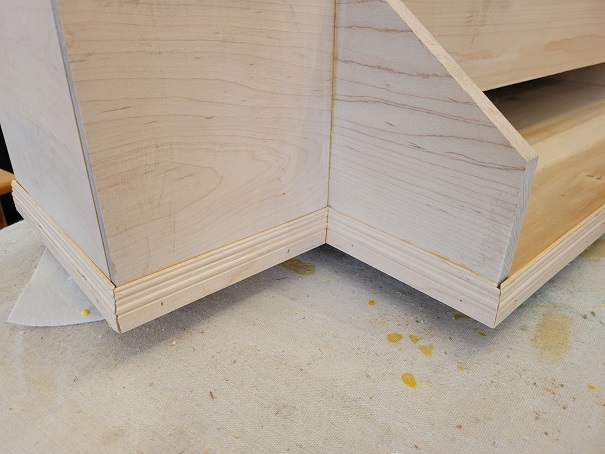Building a Virginal: Case Enhancements
April 10, 2023
New York, N.Y.
An exceedingly important role in harpsichords and virginals is played by little blocks of wood — about 1/8” by 1/2” by maybe 3 inches — called “jacks.” Each jack is associated with a key on the keyboard. When you press the key, the front of the key goes down and the tail end of the key goes up. The jack sits on that tail end of the key and it goes up as well. Sticking out of the side of the jack is a little plectrum that plucks the string.
The jack is not attached to the key, which means that if you press the key with too much force, the jack could go flying right out of the instrument. It’d be a great sight gag but generally not desirable.
To prevent jacks from flying all over the place is a bar suspended over the jacks called the “jackrail.” The jackrail must be removable in order to service the jacks, for example to replace a plectrum or trim it into a more desirable shape. Getting the jackrail into the Zuckermann Troubadour Virginal that I’m building was one of the jobs I did yesterday — Construction Day 10 if you’re keeping track.
To hold the jackrail in place are two mounting blocks. This one is glued to the inside of the case at the right rear:
The other is glued to the front left interior of the case:
The jackrail itself slips into those two slots. Mine was quite tight, so I’ll need to sand it a bit, but notice how it goes over the box guide, which will hold the jacks in an upright position:
Eventually the jackrail will have some cloth nailed into its underside to muffle the sound of the jacks as they strike the jackrail. I’m looking forward to developing a soft touch on the keyboard so I can dispense with the jackrail and watch the jacks bouncing up and down and plucking the strings.
The other job of the day was gluing on the case molding, which covers the screws that hold all the sides together. Zuckermann supplies 10 pieces of molding to go all the way around the base of the virginal. These are over-sized, and they must be cut down with miter joins.
As I’ve mentioned, construction of the virginal is taking place in the dining room of our little house In the Catskills. (Today we happen to be in the city for Terence Blanchard’s Champion at the Metropolitan Opera.) In the basement of the Catskills house is a chop saw that can do miter cuts. I couldn’t use it for the molding that goes around the edges of the soundboard because those were too small, but I did use it for this job, and I made quite a few trips up and down the cellar stairs.
Despite that convenience, I wasn’t happy with most of my miter joins. I think I have gone through much of my life believing that I’m a perfectionist at heart, but building this virginal has demonstrated to me that I am simply not as fussy and fastidious as I should be.
To position the pieces of molding on the case, Zuckermann supplies 3/4” nails and cardboard pads. The idea is that you position the molding by hammering in the nails a little, and then when you’re happy, you remove the nails, apply glue, and pound the nails back in for at least a half hour. Then the nails can be removed and the nailed holes contracted with a little water and heat.
I decided to get all the molding in place before I began gluing. Here’s the rear view:
Then, skipping every other one, I circled around removing the nails, gluing, and pounding the nails back in. Here’s the left front with my typically unsatisfactory miter joins:
On page 27 of the The Troubadour Virginal: Construction and Maintenance Manual, Ed Kottick tells us that glue on the back of the thin upper part of the molding will cause the molding to warp a bit and come away from the panel on which it’s being glued. To counteract that, the top part should be rubbed with a damp cloth. I dutifully did this for much of the molding, but then for the molding on the back, maybe I lost confidence that I was really doing something that made a difference, and maybe I didn’t dampen the molding enough, but later on — sure enough, the top of the molding had pulled away from the panel. It was so disturbing to me that I couldn’t force myself to take a photo, and now I’m wondering how to fix it.
As with all aspects of building this virginal, I believe I would do a much better job on my second try. Alas, building a second virginal is quite unlikely. (An actual harpsichord, however, might be tempting...)
